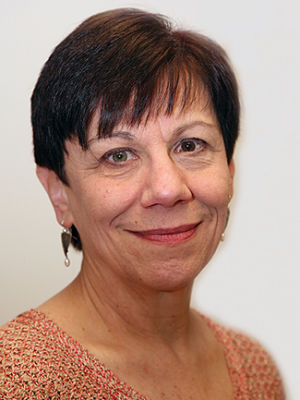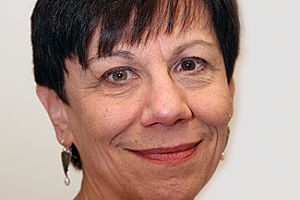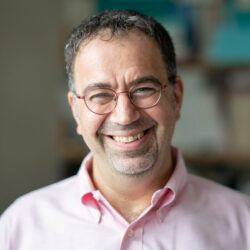Solidarity and Commitment in a #MeToo Age: Honoring Psychologist Jeanne Marecek
The Carolyn Wood Sherif Award from the American Psychological Association and the Society for the Psychology of Women goes to someone who has made sustained and substantial contributions to the field of the psychology of women as a scholar, teacher, mentor or leader. The latest recipient was a pioneer in the field who started developing the field a dozen years before the first Sherif award was granted in 1984.

Jeanne Marecek
As she finished up her Ph.D. work at Yale University, a member of the first class with a “significant” female cohort, Jeanne Marecek took a job with the psychology faculty at Swarthmore College. Once again, her gender made her unusual – this was 1972, and only 18 of Swarthmore’s 128 tenure-track faculty were female, and she was the only female faculty member in her department. This disparity opened up a door for Maracek: she was tasked with starting a new course, a class in the “psychology of women,” likely the first such women’s studies course in the progressive Pennsylvania college’s history.
“It was a great class, even though there was no literature to read,” she told her college magazine Jeffrey Lott when she retired to become Swarthmore’s William R. Kenan Jr. Professor Emerita of Psychology in 2010. “We were stuck with reading orthodox psychology—Freudian psychoanalysis, work speculating on the brain bases of women’s intellectual inferiority and excess emotionality, and so on—so we set about critically analyzing it from the standpoint of popular feminism and scientific adequacy.”
And so she became a pioneer of this ‘psychology of women,’ which with time and reflection became ‘psychology and women’ and more latterly ‘psychology and gender.’
“We’re not putting people in boxes and asking how they are the same and how they are different,” Marecek told Lott. “We study gender as an identity that emerges in the context of social relations, and we look at the larger cultural and social processes that create masculinities and femininities as we know them.”
An interview by Jenna MacKay for Alexandra Rutherford’s ‘Psychology’s Feminist Voices’ project describes how Marecek’s approaches shifted over time.
A shift in Marecek’s own research methodology occurred as a result of a trip to the Himalayas during a sabbatical. When she had completed her six month trek and sat down to work, there was no connection between her research and anything she had just lived or experienced. She couldn’t help but ask herself “What am I doing?” After a brief period of questioning, she was able, through multi-disciplinary social and professional networks, to find renewed inspiration for her work. Through interdisciplinary gatherings, Marecek became immersed in qualitative research and began to explore the possibilities of post-structuralist theory for psychology.
Her work also shifted geographically. In the 1990s Marecek relocated to Sri Lanka until he civil war there forced her university there to close – she’s returned to serve as a scholar, practitioner and trainer since — but the ferment gave the scholar new insight and a research focus on studies of suicide and cultural psychology.
Her many roles are also reflected in her written contributions. Currently one of the editors of the journal Feminism & Psychology and editor of the Qualitative Studies in Psychology book series with Michelle Fine, she has co-written several influential books, including 2012’s Gender and Culture in Psychology: Theories and Practices (with Eva Magnusson) and 1990’s Making a Difference: Psychology and the Construction of Gender (with Rachel Hare-Mustin).
Social Science Space asked Marecek some questions about her award, her impact and her field.

Carolyn Wood Sherif was a social psychologist perhaps best known for developing social judgment theory and early work on the psychology of women. She died in 1982.
What does this particular award, the Carolyn Wood Sherif Award, mean to you?
I admired Carolyn Wood Sherif since my first years as a psychology lecturer. I was the sole woman in my department and there had been no senior women on the faculty in my graduate program. In that setting, the presence of women was openly spoken of as an impediment to scholarship and a detriment to psychology’s prestige as a discipline. Coming to know Carolyn—her scholarly work, her unswerving feminism, her support for junior women, and her commitment to institutionalizing gender studies as a field of psychology —was key to my finding a place in psychology. I’m honored to receive an award in her name.
The award recognizes sustained excellent work “as a scholar, teacher, mentor and leader.” What have you learned about yourself in pursuing those sorts of roles since you started your career? How is what you’ve done reflected what you received, or didn’t receive, earlier in your own career?
Like most U.S.-based psychologists my age, I had no formal training in gender studies. In my first years of teaching what we then called ‘psychology of women,’ there were neither textbooks nor research articles to teach with. Instead, my students and I together poked and prodded at what mainstream psychology had to say about women, men, sexualities, sex, mental health, marriage, work, and so on. I was fortunate to teach at Swarthmore College, an institution that valued intensive teaching, small classes, and seminar-style learning. I learned critical thinking side-by-side with my students, and through that, I came to appreciate enormous potential of collaborative work.
The 1970s and 1980s were a remarkable time of feminist activism in the U.S.—on campuses, in the streets, in professional organizations, and in civil society organizations. On campus, my colleagues and I worked to institutionalize gender studies in the curriculum (simultaneously creating a space for interdisciplinary studies). On the streets, we held rallies and protests. In the American Psychological Association, we pressed for dozens of reforms—in ethics codes, in academic hiring practices, in language use in the journals and textbooks, in scientific review procedures, in APA governance. As part of a vibrant feminist community in Philadelphia, I was able to work with several local agencies working on behalf of girls and women.
What lessons did I take away from these experiences? Most important, I witnessed the power of solidarity and sustained commitment to create change. Also, I saw that although making change is hard, it is possible. I learned that when changes threaten to alter power relations, pressures to change back mount. I also witnessed the power of women working in concert across multiple lines of difference—sexuality, race/ethnicity, social status, language, religion, to name a few— to accomplish institutional and social change.
From your perch, what is the state of the nation when it comes to discrimination, both in your ecosystem and in the wider world?
We in the U.S. are living through extraordinarily difficult times. Progressive social, economic, and environmental policies are being undermined virtually every day. Members of racialized groups, as well as migrants, Muslims, LGBT individuals, and others, are under siege. Women’s access to reproductive health care may diminish substantially before you read this. Daily the media present us with yet another sordid story of sexualized abuses of power by prominent men who hold high status positions.
Despite the disquieting news, I’m convinced that movements for gender and racial justice, reproductive rights, workplace equity, and acceptance of diverse gender and sexual expression will not be turned back. Last January, between 3 1/2 and 4 1/2 million people (mostly women) marched to protest President Trump’s sexist behavior and his proposed political agenda. The two marches I attended weren’t “marches” at all—the streets were so clogged with throngs of participants that no movement was possible.
Beginning in October, the #MeToo movement has generated a tsunami of Twitter and Facebook posts from women who had been harassed or assaulted by male entertainers, newscasters, politicians, bosses, coaches, physicians, professors, and military personnel. The wave of accusations has yet to subside, and women are standing firm against a backlash and efforts to denigrate victims. I believe that we are at a juncture in history when substantial numbers of women across the social spectrum stand unified and determined that change must take place.
Would you talk a little about your work on suicide? Are your findings applicable beyond Sri Lanka, or are they mostly unique to that island?
When I began to work in Sri Lanka, this small island was in the midst of a spiral of suicide that eventually led the highest rate of self-inflicted deaths in the world. At the same time, the country seemed to have a very low incidence of depression—an apparent paradox. As I worked with grassroots organizations and with mental health practitioners on hospital wards, I came to understand that most suicide-like acts in Sri Lanka had little to do with depression or “mental illness.” They were, rather, a means of communicating a sense of grievance, frustration, or anger, of calling down shame or blame on a wrongdoer, when outright expression of such feelings was socially proscribed. My later work (in collaboration with Chandanie Senadheera) focused particularly specifically on adolescent girls and young adult women, who were the group most likely to engage in such suicide-like acts.
Does this work have lessons beyond Sri Lanka?
When I reviewed studies of suicidal behavior, I learned about other social groups and locales in South Asia, East Asian, and Africa in which suicide-like acts could best be understood as culture-specific social practices, that is, patterned ways of responding to untenable social situations. By contrast, in Western high-income countries, mental health spokespersons have emphatically insisted that suicidal behavior is nearly always a symptom of “mental illness.” This narrow individual focus (especially if it paves the way to a pharmaceutical remedy) might distract attention from relational and social difficulties leading to the suicide-like act and in that way close off possibilities for change.
 As the editor of Feminism & Psychology, could you provide some insight on that nexus? Is it the exact same thing as “feminist psychology” or the “psychology of women”? How are these areas received by other parts of academic psychology and the public at large?
As the editor of Feminism & Psychology, could you provide some insight on that nexus? Is it the exact same thing as “feminist psychology” or the “psychology of women”? How are these areas received by other parts of academic psychology and the public at large?
When the journal was founded some 26 years ago, the founders took great care in choosing its name. They quite deliberately positioned the journal at the “interface of feminism and psychology” and they encouraged critical engagements with both psychology and feminism. In our inaugural editorial in 2014, Catriona Macleod, Rose Capdevila and I chose to pluralize feminisms and psychologies. Among the three of us, our scholarly work spans several continents, some in the global North and some in the global South. This geographic span made it abundantly clear that feminisms necessarily take shape within local contexts. It also made it quite clear that psychologies do as well. All psychologies are “thought collectives” that are rooted in the worldview of the societies in which they are embedded.
How is feminist work perceived by other parts of academic psychology?
That is an interesting question with a wide variety of local answers. Thinking about North America, I note that feminist psychologists are acknowledged to be among the leading figures in the development of innovative methods and theoretical frameworks – for example, discursive psychology, participatory research methods, critical psychology, decolonial psychology, and narrative therapy.
Do you have any career advice for a young woman (or young man) considering psychology?
Giving advice is not my forte. What has been most important to me personally and as a scholar has probably been detrimental to my “career” in the narrow sense of professional advancement. I value my experiences of working with and learning from colleagues in other disciplines (such as anthropology, sociology, history, public health, and cultural studies). I also value the opportunities I have had to be part of academic communities in other parts of the world and to work with and learn from colleagues and students in those settings. These experiences expanded my view of the world. And, crucially, having to explain U.S.-based psychology to scholars on the outside helped me to gain a critical perspective on its strengths and limits.






















































































